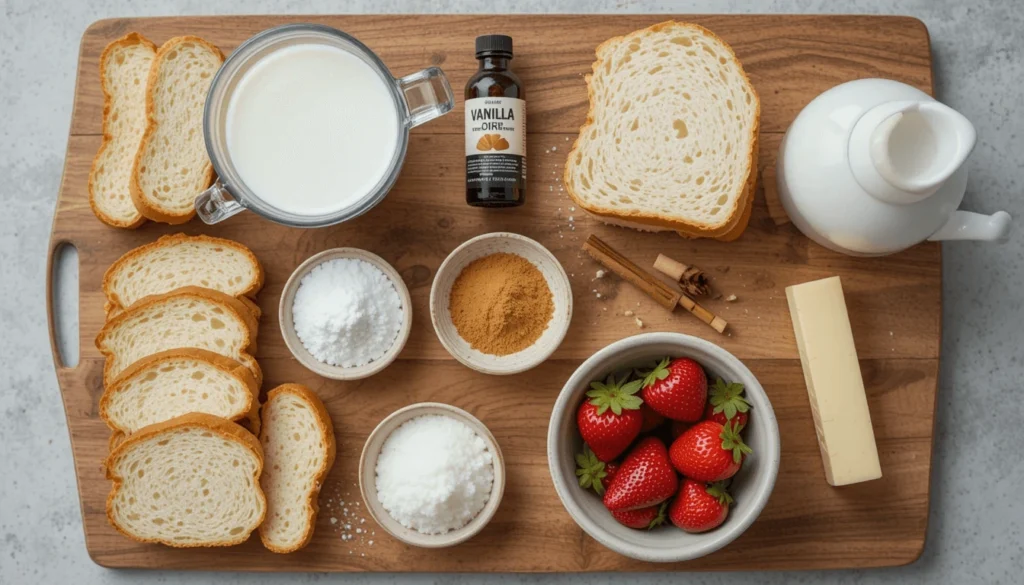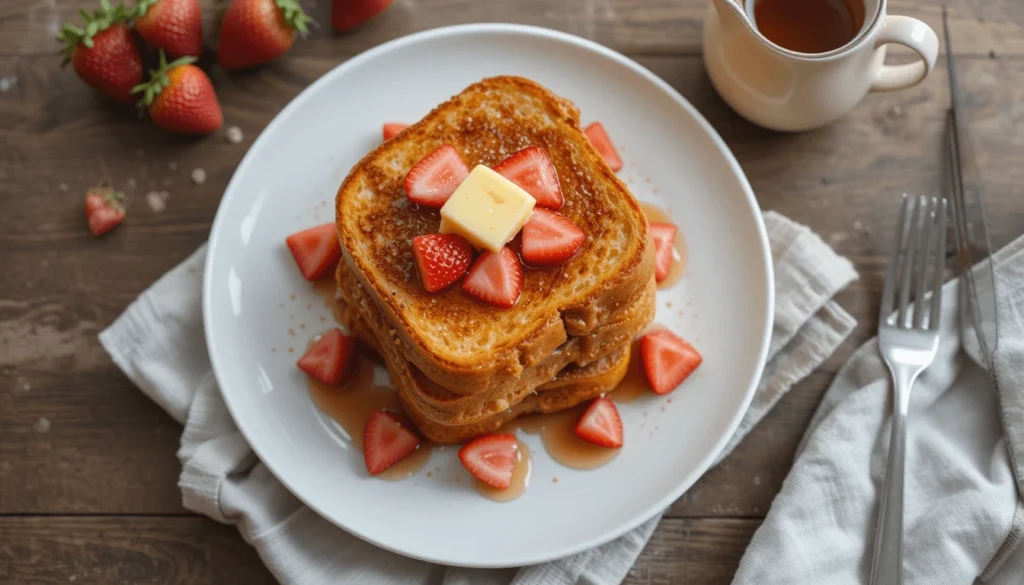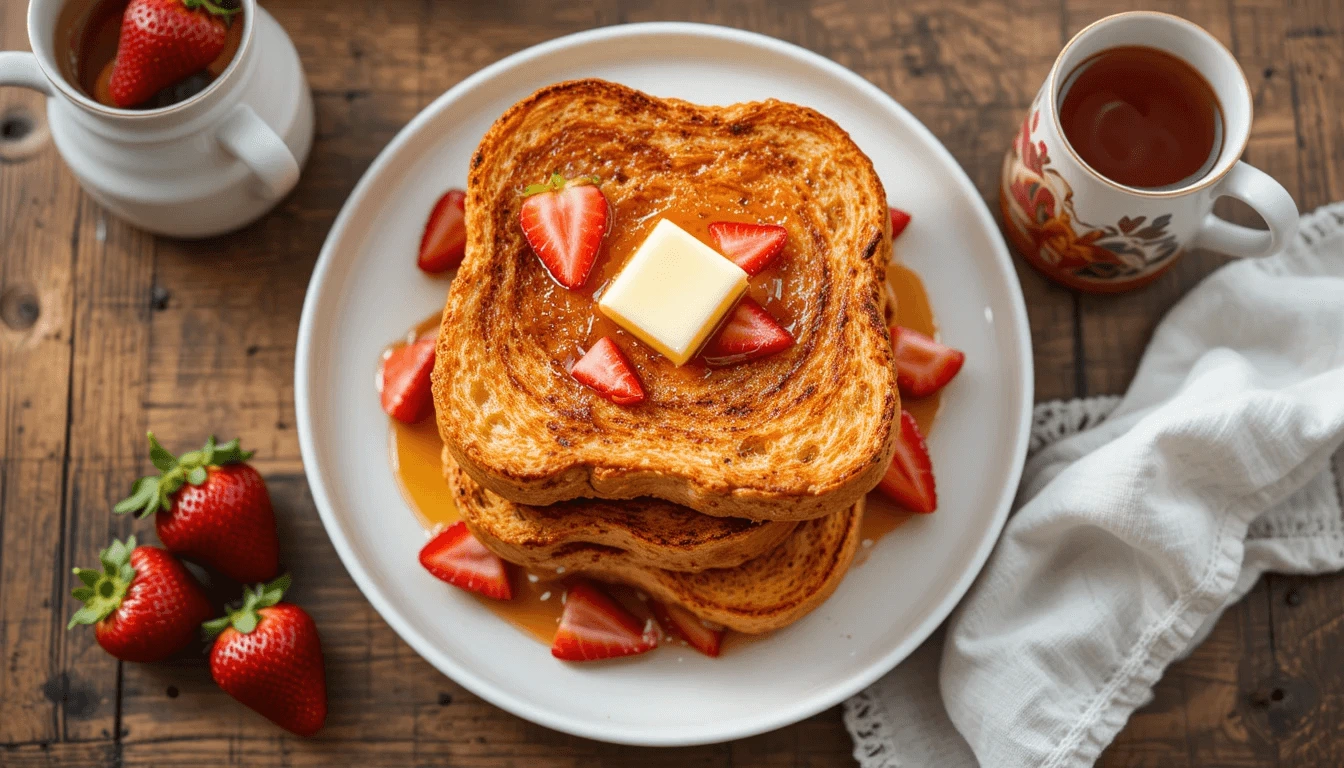Table of Contents
There’s something magical about waking up to the sweet aroma of French toast sizzling on the griddle. That crispy, golden exterior giving way to a soft, tender middle—it’s the breakfast of dreams. But what if eggs are off the menu due to allergies or dietary choices? Many assume that classic French toast is impossible without its signature ingredient. I’m here to tell you that couldn’t be further from the truth.
After perfecting this recipe through countless Sunday morning https://www.momables.com/egg-free-french-toast-recipe/experiments, I can confidently say that this eggless French toast doesn’t just match the original—in many ways, it exceeds it. The secret lies in achieving that perfect contrast between light, airy middles and crispy, caramelized crusts without relying on eggs at all.
The Science Behind Egg-Free French Toast
The traditional role of eggs in French toast is twofold: they provide richness and help create that distinctive custard-like texture. In our egg-free version, we’re using a clever combination of milk and cornstarch that perfectly mimics these properties.
Cornstarch acts as a thickening agent, giving the milk enough body to coat the bread properly. When heated, this starchy coating transforms into a crisp exterior while allowing the inside to remain delightfully soft. The addition of vanilla extract brings depth of flavor that, when combined with a touch of cinnamon, creates that unmistakable French toast essence that keeps everyone coming back for seconds.
This technique was actually inspired by my experiments with egg and dairy-free pancakes years ago. I discovered that starches could create exceptional texture in breakfast foods, and when applied to French toast, the results were nothing short of remarkable.
Choosing the Right Ingredients
The Bread Makes All the Difference
The foundation of any great French toast—with or without eggs—is the bread. For that pillowy-soft middle we’re after, opt for heartier, thicker slices. While standard white sandwich bread can work in a pinch (just be sure to reduce the soaking time), artisanal loaves like brioche, challah, or a good sourdough cut into 3/4-inch slices will elevate your breakfast game substantially.
The sturdier the bread, the better it will hold up to the soaking process. If you’re using regular white bread, remember: a quick dip is all you need—just enough time for the bread to absorb some liquid without becoming so saturated it falls apart during cooking.
The Milk Matrix
For the best results, regular full-fat milk creates a thicker batter that adheres beautifully to the bread. That said, this recipe is incredibly versatile! Any dairy-free alternative works wonderfully—almond, oat, soy, or coconut milk all bring their own subtle flavor nuances to the final dish.
If you’re completely out of milk options, don’t worry—I have a separate “no milk French toast” recipe that uses other liquid bases entirely.
Ingredients You’ll Need
- 1 cup milk (dairy or plant-based)
- 3 tablespoons cornstarch
- 1 teaspoon vanilla extract
- 1/2 teaspoon cinnamon (optional, but highly recommended)
- 8 slices of bread (preferably thicker cut)
- 2-3 tablespoons butter or cooking spray
- Fresh sliced strawberries (for serving)
- Pure maple syrup (for serving)

Making Perfect Eggless French Toast
Step 1: Prepare the Dipping Mixture
In a shallow dish wide enough to accommodate a slice of bread, whisk together the milk, cornstarch, vanilla extract, and cinnamon (if using). The key here is thorough mixing—ensure the cornstarch completely dissolves with no lumps hiding in the corners of your dish. This creates a smooth batter that will coat evenly.
Step 2: The Dipping Technique
The soaking step requires a delicate balance. Take one slice of bread and place it in the mixture. Count to three, then flip and soak the other side for another three seconds. This brief immersion is usually perfect—enough time for the bread to absorb the flavor without becoming overly saturated.
For heartier breads like challah or brioche, you can extend this to 4-5 seconds per side. For thinner white bread, reduce to just 1-2 seconds each side to prevent tearing.
Step 3: Cooking to Golden Perfection
Heat a large non-stick pan or griddle over medium heat. Add a small amount of butter (or a light spray of cooking oil for a lower-fat option) and allow it to melt completely.
Place your soaked bread slices in the pan, being careful not to overcrowd them. Cook for 3-4 minutes on the first side until golden brown, then flip and cook an additional 3 minutes on the second side. The ideal French toast features a rich amber color with slightly darker edges—this caramelization is where much of the flavor develops.
Work in batches, adding a small amount of fresh butter to the pan between each round for consistent results.
Storage and Make-Ahead Tips
One of the best things about this eggless French toast is how well it freezes. To meal prep for busy mornings:
- Allow cooked slices to cool completely to room temperature
- Wrap individual pieces in parchment paper or plastic wrap
- Place wrapped slices in a freezer-safe bag
- Freeze for up to 2 months
When you’re ready to enjoy, simply pop a frozen slice in the toaster for a quick reheat, or warm in a 375°F oven for 8-10 minutes.
For a kid-friendly twist that’s perfect for on-the-go breakfasts, try cutting the cooked French toast into “dippable” strips before freezing. Little ones love dunking these portable sticks into maple syrup cups!
Topping Ideas to Elevate Your French Toast
While I personally can’t resist the classic combination of pure maple syrup and fresh strawberries, the topping possibilities are endless:
- Homemade blueberry syrup (simmer fresh or frozen blueberries with a touch of maple syrup)
- Sliced bananas and a drizzle of honey
- Lightly sweetened whipped cream with cinnamon
- Warm spiced apples for a fall-inspired treat
- A dusting of powdered sugar for elegant simplicity
- Chopped toasted pecans for added crunch
- Fresh berry compote (strawberries, raspberries, and blackberries gently warmed)

Why This Recipe Works Every Time
The beauty of this eggless French toast lies in its simplicity and science. The cornstarch creates structure while vanilla adds depth. The brief soaking time ensures perfect texture, and the medium-heat cooking allows for even browning without burning.
From families navigating egg allergies to those simply caught without eggs on a lazy Sunday morning, this recipe has become a reliable favorite that proves dietary restrictions never have to mean compromising on classic breakfast indulgence.
Try this eggless French toast this weekend—I’m confident it will earn a permanent spot in your breakfast rotation!

